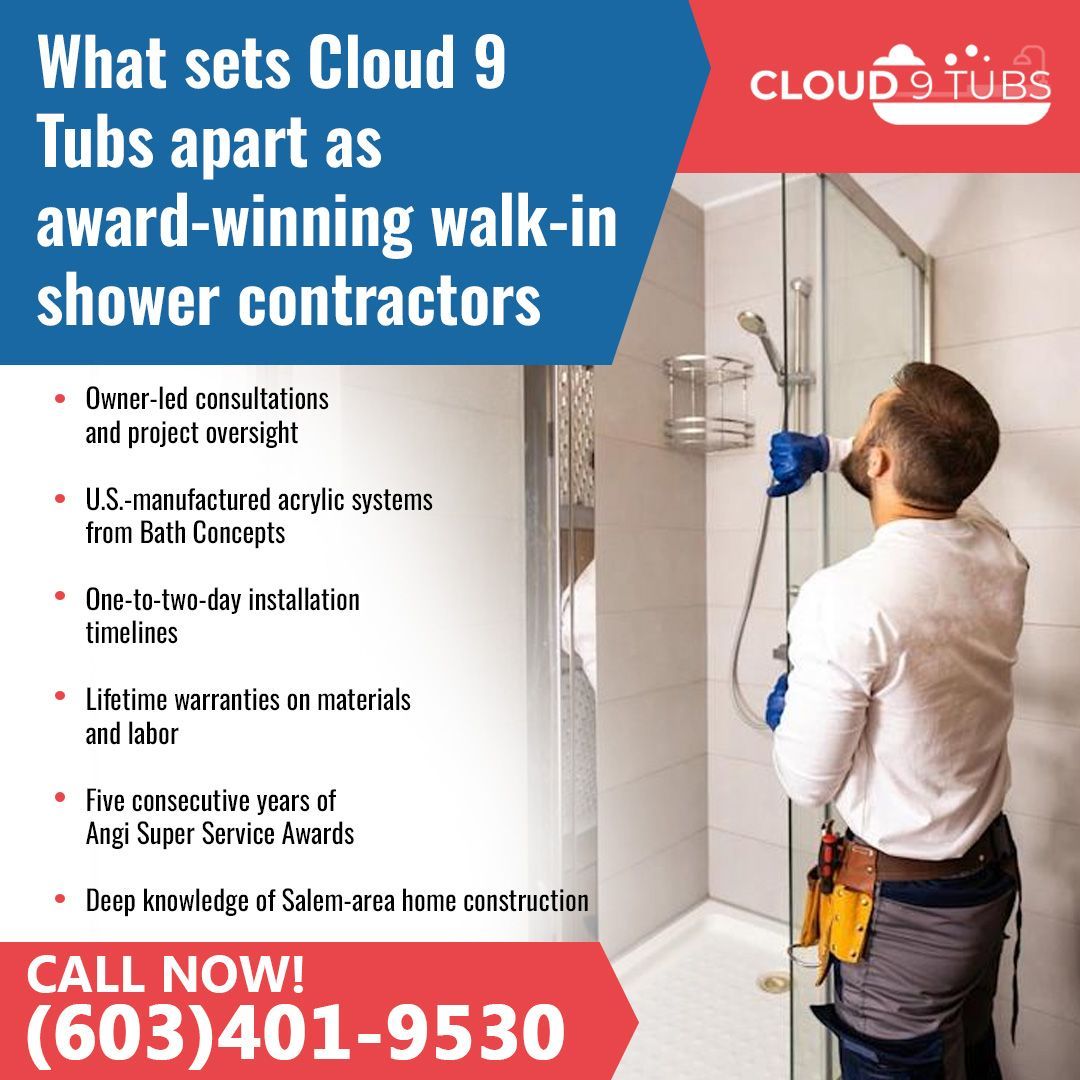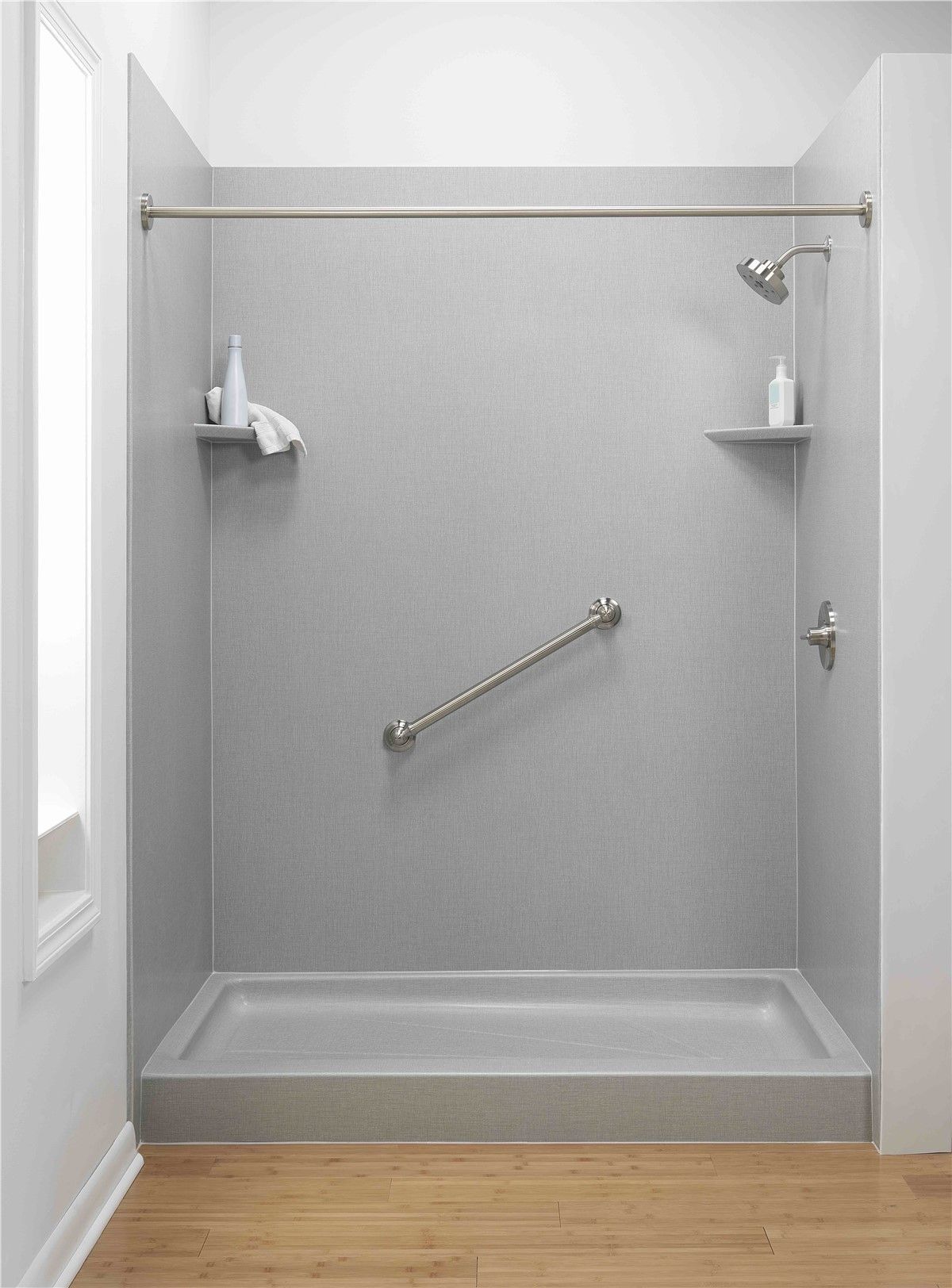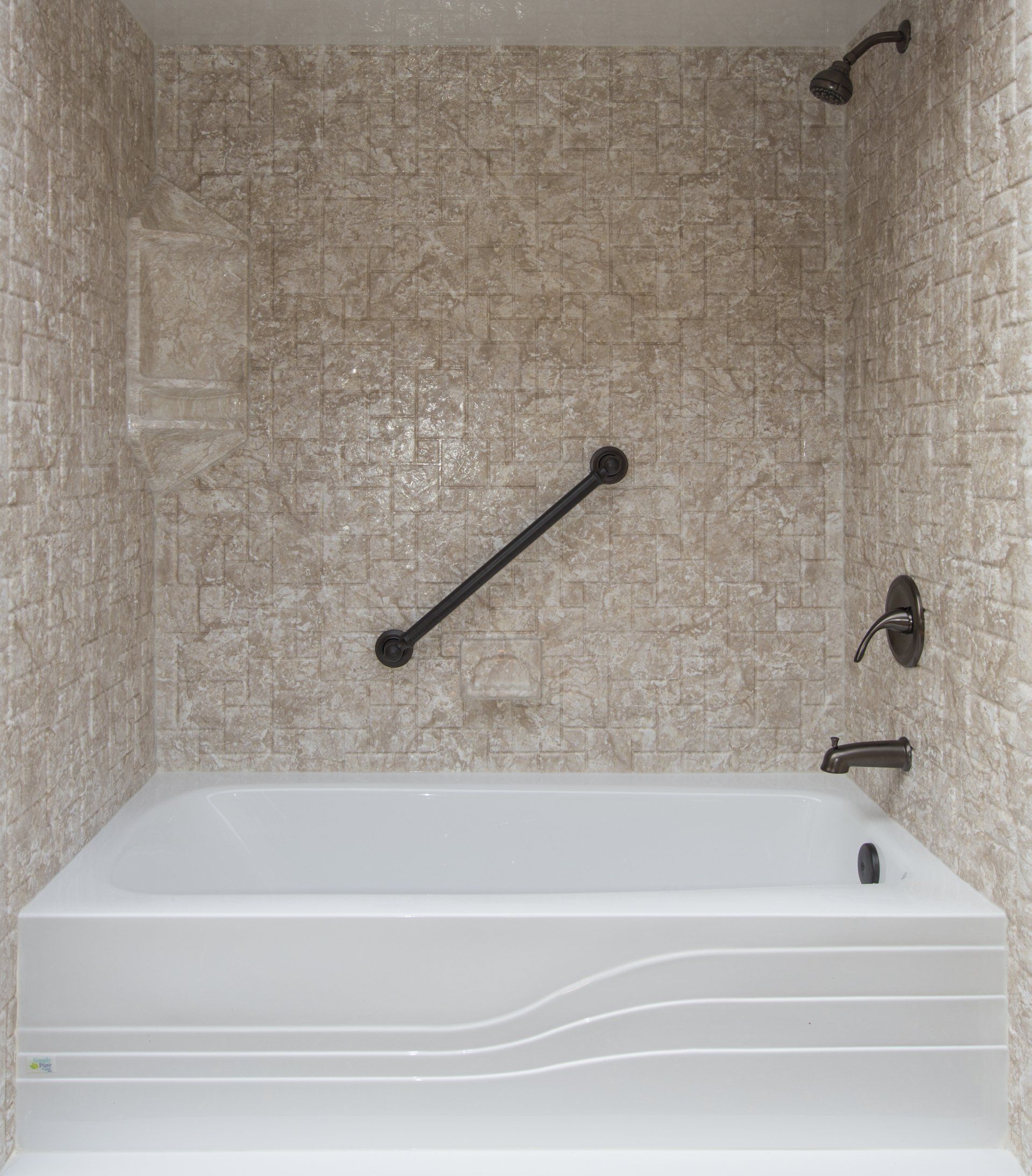Why walk-in tubs are a smart investment for New Hampshire homeowners
When it comes to making your home more comfortable, safe, and valuable, there are a lot of options out there. But if you’re a homeowner in New Hampshire, one of the smartest investments you can make is installing a walk-in tub. Now, I know what you might be thinking: "Why would I need a walk-in tub?" or "Is it really worth the investment?" Well, let me tell you—there are plenty of reasons why a walk-in tub is not just a luxury but a practical upgrade for your home.
First off, let’s talk about safety. New Hampshire’s winters can be harsh, and the risk of slipping and falling in the bathroom becomes even greater as we age. This is where walk-in tubs come into play. With their low step-in height, grab bars, and slip-resistant floors, walk-in tubs are designed to significantly reduce the risk of falls and injuries. And for those who may have mobility issues or are recovering from surgery, these features aren’t just convenient—they’re lifesaving.
But safety isn’t the only benefit. Walk-in tubs also offer therapeutic advantages that go beyond just getting clean. Many models come with hydrotherapy jets, which can help alleviate joint pain, muscle soreness, and even symptoms of arthritis. Imagine sinking into a warm bath with jets that massage your aches and pains away—doesn’t that sound like the perfect way to unwind after a long, cold day in New Hampshire? It’s like having a personal spa right in your home, minus the spa prices.
Now, I know what you’re thinking: "This all sounds great, but what about the cost?" It’s true that walk-in tubs can be more expensive upfront compared to traditional bathtubs, but consider this: they’re an investment in your health, safety, and overall quality of life. Plus, they can actually save you money in the long run. How? Well, for starters, the reduced risk of falls means potentially avoiding costly medical bills. Additionally, if you’re planning on aging in place, a walk-in tub can help you stay in your home longer, delaying or even eliminating the need for assisted living facilities, which can be a significant financial burden.
Let's get into the nitty-gritty of how walk-in tubs can actually be a sound financial investment. Yes, you heard that right—installing a walk-in tub in your New Hampshire home can not only enhance your lifestyle but also add value to your property.
First, consider the long-term savings. We touched on this briefly in Part 1, but it’s worth delving deeper. The cost of falls and related injuries isn’t just about the immediate medical expenses. There’s also the possibility of rehabilitation, ongoing treatments, and the time lost recovering. For older homeowners, the financial impact can be even more severe, especially if the injury limits their ability to live independently. A walk-in tub significantly reduces these risks, which means fewer medical costs down the line.
But the financial benefits don’t stop there. Let’s talk about home value. In the real estate market, features that cater to accessibility are increasingly in demand. This is especially true in New Hampshire, where the population is aging, and many are looking for homes where they can comfortably age in place. A walk-in tub can make your home more attractive to these potential buyers, increasing its marketability. In fact, having a walk-in tub could be the deciding factor for someone choosing between your home and another.
You might also be wondering about how this affects resale value. While not every home improvement guarantees a return on investment, walk-in tubs tend to hold their value well, especially in regions like New Hampshire where the climate and demographics align with the benefits these tubs provide. Think of it this way: a walk-in tub isn’t just a purchase; it’s an upgrade that makes your home more appealing to a broader range of buyers.
Another angle to consider is energy efficiency. Modern walk-in tubs are designed to be energy-efficient, using less water and requiring less heating compared to traditional bathtubs. This means lower utility bills, which can add up to substantial savings over time. Plus, many walk-in tubs are built with durable materials that require minimal maintenance, further reducing costs associated with upkeep.
So, when you weigh the initial investment against the long-term benefits, it becomes clear that a walk-in tub is more than just a luxury—it’s a wise financial decision. Whether you’re planning to stay in your home for years to come or considering selling in the future, this upgrade offers tangible economic advantages that shouldn’t be overlooked.
Now that we’ve covered the safety and financial benefits of walk-in tubs, let’s talk about the lifestyle enhancements that come with making this upgrade. Because, let’s be honest, your home should be a place where you feel comfortable, relaxed, and at ease, especially after a long day of dealing with New Hampshire’s unpredictable weather.
First off, comfort is king when it comes to walk-in tubs. Traditional bathtubs often require a fair bit of maneuvering to get in and out of, which can be uncomfortable, if not downright painful, for those with mobility issues or chronic pain. Walk-in tubs, on the other hand, are designed with ease of use in mind. The low step-in threshold means no more awkward climbing over high sides, and the built-in seating allows you to relax in a comfortable, upright position. No more lying down uncomfortably in a cold tub waiting for it to fill up—walk-in tubs fill while you’re already settled in, making the entire experience more enjoyable from start to finish.
But the comfort goes beyond just ease of use. Many walk-in tubs come equipped with additional features that transform your daily bath into a luxurious experience. Picture this: warm water cascading around you, with adjustable water jets gently massaging your tired muscles. Some models even offer air jets, chromotherapy (that’s fancy talk for light therapy), and heated backrests. These features aren’t just about pampering yourself (though there’s nothing wrong with that!); they provide genuine health benefits, such as improved circulation, reduced stress, and relief from conditions like arthritis and fibromyalgia.
For those who struggle with sleep—something not uncommon in our fast-paced world—taking a warm bath in a walk-in tub before bed can be a game-changer. The combination of warmth and hydrotherapy helps to relax both body and mind, setting the stage for a better night’s sleep. And we all know how much a good night’s rest can improve our overall mood and productivity the next day.
Then there’s the peace of mind that comes with knowing you have a safe and accessible bathing option at home. This isn’t just about preventing accidents; it’s about reclaiming your independence. Whether you’re living alone or with family, the ability to take care of yourself without assistance is priceless. Walk-in tubs give you that freedom, allowing you to maintain your privacy and dignity, even as your needs change over time.
So, while we often think of home improvements in terms of how they look or how much they cost, it’s important not to overlook how they make us feel. A walk-in tub offers a unique blend of practical benefits and everyday luxuries, making it an investment in both your home and your quality of life.
Now that we’ve explored the numerous benefits of having a walk-in tub, from safety and financial perks to enhanced comfort and lifestyle improvements, it’s time to talk about the installation process. I know that for many homeowners, the thought of a major bathroom renovation can be daunting. But rest assured, the process of installing a walk-in tub is more straightforward than you might think—especially when you’re working with a team that knows what they’re doing.
First and foremost, let’s talk about the timeline. You might be surprised to learn that in most cases, a walk-in tub can be installed in as little as one day. That’s right—our team at Cloud 9 Tubs specializes in low-impact installations, meaning we can remove your old tub or shower and have your new walk-in tub up and running before dinner. This quick turnaround minimizes disruption to your daily routine, which is especially important if you only have one bathroom in your home.
The process begins with a consultation, where we’ll assess your bathroom space and discuss your specific needs and preferences. Every home is unique, and we believe that your walk-in tub should be tailored to fit both your lifestyle and the existing layout of your bathroom. During this consultation, we’ll take precise measurements and walk you through the different tub options, features, and finishes available. We want you to feel fully informed and confident in your choices before any work begins.
On installation day, our team handles everything—from the removal of your old tub or shower to the installation of your new walk-in tub, including any necessary plumbing and electrical work. We pride ourselves on maintaining a clean work environment, so you don’t have to worry about dust or debris cluttering up your home. And because our tubs are designed for easy installation, there’s no need for extensive remodeling or structural changes to your bathroom.
Another concern many homeowners have is the quality of the installation itself. At Cloud 9 Tubs, we stand by our work with a lifetime warranty. That’s how confident we are in the durability and craftsmanship of our walk-in tubs. We use only high-quality materials that are made to last, so you can trust that your new tub will serve you well for years to come. And should any issues arise, our warranty ensures that you’re covered, giving you peace of mind long after the installation is complete.
One of the most significant advantages of working with a local company like ours is the personalized service you receive. Unlike large, impersonal corporations, we’re here to answer any questions or concerns you may have, both during and after the installation process. You’ll deal directly with the owner—me—ensuring that your experience is as smooth and stress-free as possible.
As we wrap up this deep dive into the benefits of walk-in tubs, let’s take a moment to look at the bigger picture. Installing a walk-in tub is more than just a home improvement project—it’s an investment in your future and your well-being.
One of the most compelling long-term benefits of a walk-in tub is the ability to age in place. For many New Hampshire homeowners, the idea of staying in their own homes as they grow older is incredibly appealing. Your home is filled with memories, comfort, and the community you’ve built over the years. A walk-in tub allows you to maintain your independence and stay in the place you love, even as your needs evolve.
But it’s not just about aging. Walk-in tubs offer everyday comfort and safety that can benefit anyone, regardless of age or ability. Whether you’re dealing with chronic pain, recovering from surgery, or simply want to enjoy a more relaxing bathing experience, a walk-in tub caters to your needs. It’s an upgrade that adds convenience, luxury, and peace of mind to your daily routine.
And let’s not forget about the value it adds to your home. As we discussed in earlier parts, a walk-in tub can make your property more attractive to potential buyers, especially in a market like New Hampshire, where accessibility features are increasingly in demand. Even if you’re not planning to sell anytime soon, it’s reassuring to know that your investment in a walk-in tub is one that holds its value.
But perhaps the most significant benefit of all is the impact on your quality of life. There’s something incredibly empowering about being able to care for yourself safely and comfortably. Knowing that you can take a relaxing bath without worrying about slipping or falling makes a huge difference in your overall sense of well-being. It’s a small change that can have a profound impact on your day-to-day life.
At Cloud 9 Tubs, we’re passionate about providing solutions that truly enhance our customers’ lives. We believe that everyone deserves a bathroom that is not only beautiful but also safe and accessible. That’s why we’re committed to offering high-quality walk-in tubs that are designed to last a lifetime.
So, if you’ve been considering making this upgrade to your home, now is the perfect time. Imagine stepping into your new walk-in tub, feeling the soothing warmth of the water, and knowing that you’ve made a smart investment in both your home and your future. It’s more than just a tub—it’s a pathway to greater independence, comfort, and peace of mind.
Thank you for taking the time to explore why walk-in tubs are a smart investment for New Hampshire homeowners. We hope you feel inspired and informed about the benefits of making this upgrade. When you’re ready to take the next step, don’t hesitate to reach out to us at Cloud 9 Tubs. We’re here to help you transform your bathroom into a safer, more beautiful space that you can enjoy for years to come.
Your home is your sanctuary, and every improvement you make should enhance your comfort, safety, and quality of life. A walk-in tub checks all those boxes and more. Whether you’re thinking about your current needs or planning for the future, investing in a walk-in tub is a decision you won’t regret. Ready to make the change? Contact Cloud 9 Tubs today to schedule your consultation. We can’t wait to help you create the bathroom of your dreams!
Blog






